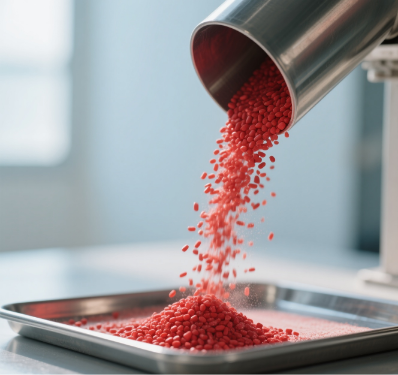In recent months, global potash markets have experienced a complex tapestry of price fluctuations and supply dynamics. Despite geopolitical challenges and operational adjustments, Russia and Belarus have emerged as pivotal players. Although prices have remained stable in major regions, these two countries have achieved significant export growth, demonstrating their resilience and ability to adapt to changing market conditions.
Market Price Trends and Regional Dynamics
According to the latest data, potash prices are showing mixed signals globally. The Vancouver FOB spot price for muriate of potash (MOP) ranges from $285 to $327 per ton, reflecting a slight $2 decrease at both ends. In Northwest Europe, prices range from $302 to $401 per ton, maintaining stability at the lower end while dipping slightly at the high end. Notably, the Baltic/Black Sea region—a critical export hub for Russian and Belarusian potash—remains steady at $263-$305/ton. Meanwhile, import-dependent markets such as Southeast Asia and Brazil maintain relatively firm prices of $360-$380/ton CFR and $365-$370/ton CFR, respectively, reflecting robust demand from major agricultural regions. Data from the International Fertilizer Association (IFA) indicates that Southeast Asian imports grew 12% year over year (YoY) in Q2 2025, while Brazilian demand surged 15% due to expanding soybean cultivation.
Russian Potash: Export Resilience and Operational Adjustments
Russia’s potash sector defied expectations in the first half of 2025, recording a 5% year-on-year increase in exports to 6.8 million metric tons. EuroChem’s VolgaKaliy mine was the primary driver of this growth, surging 23% to reach 1.9 million tons. In contrast, Uralkali, Russia’s other major producer, saw a modest 1% decline, exporting 4.9 million tons. The second quarter posed challenges as both producers underwent scheduled maintenance, resulting in an 8% drop in exports to 3.1 million tons (excluding domestic consumption). However, the total production loss was approximately 400,000 tons (300,000 tons from Uralkali and 100,000 tons from EuroChem), which is significantly lower than the projected reduction of 700,000 tons. EuroChem’s VolgaKaliy mine reported a record quarterly output of 950,000 tons in Q1, which offset Uralkali’s 1.5 million-ton dip in Q2 due to maintenance. This efficient management of maintenance-related disruptions highlights Russia’s capacity to mitigate operational risks and maintain export volumes.
Belarusian Potash: Strategic Adaptation Amid Constraints
Despite conducting major equipment upgrades at its Soligorsk-4 mine, Belaruskali, Belarus’s flagship producer, achieved an astonishing 18% increase in rail exports to 6.04 million tons during the first half of 2025. This achievement is especially impressive considering the ongoing geopolitical pressures and logistical challenges. A notable shift in export composition reveals a strategic realignment. Shipments to China plummeted 40% to 540,000 tons, with no exports recorded in June. However, this decline was offset by a 35% surge in exports to Southeast Asia, reaching 1.2 million tons, and a 28% increase to Latin America, reaching 600,000 tons.
Belarus has prioritized the production of powdered potassium chloride to meet global demand. This accounted for 45% of total exports in the first half of 2025, up from 32% in 2024. The effective utilization of existing stockpiles to maintain export volumes demonstrates a proactive response to market shifts and geopolitical obstacles, ensuring a steady supply to alternative destinations.
Market Implications and Future Outlook
Russia and Belarus’s robust export performance occurs against the backdrop of several key factors:
- BRICS Demand Surge: Rising fertilizer demand in emerging markets, particularly in Brazil, Russia, India, China, and South Africa (BRICS), has increased overall demand. IFA estimates that BRICS nations accounted for 58% of global potash imports in the first half of 2025, up from 52% in 2024.
- Sanctions Adaptation: Both countries have successfully adapted to Western sanctions by diversifying their logistics. Rail exports via the Trans-Siberian route to Asia increased by 22% year over year (YoY), while shipments through Baltic ports to Africa rose 18%.
- Price Stability in Import Markets: Consistent pricing in Southeast Asia and Brazil indicates balanced supply and demand in critical agricultural hubs. In Indonesia, for example, potash inventories reached 1.2 million tons in June, which is 10% above the five-year average and suggests an ample supply.
Industry analysts anticipate several key trends
– Export recovery in the second half (H2) of the year: As maintenance programs conclude, Russian and Belarusian exports are expected to rebound and potentially surpass first-half (H1) levels. – EuroChem plans to increase VolgaKaliy production by 15% in Q4, aiming for 1.1 million tons.
– Global price stabilization: Sustained supply from these producers, coupled with stable demand, may prevent significant price fluctuations. The IFA forecasts that global potash prices will remain within the $330-$380/ton CFR range through 2025.
– Trade Flow Shifts: The strategic redirection of exports to non-traditional markets, such as Africa and Latin America, will likely continue, reducing reliance on Western importing regions. Belarus aims to increase its share of the African market to 20% by the end of the year, up from 15% currently.
Conclusion
Despite geopolitical tensions and operational disruptions, Russia and Belarus have solidified their status as indispensable players in the global potash market. Their ability to adapt logistics, optimize production, and pivot export destinations showcases their resilience and strategic agility. As maintenance-related constraints ease and geopolitical adaptations deepen, these nations are poised to maintain their dominance in shaping global potash supply dynamics through 2025 and beyond. Their performance will remain essential in ensuring stable fertilizer availability for key agricultural regions worldwide. With combined exports projected to reach 14-15 million tons by the end of the year, Russia and Belarus are expected to control over 40% of the global potash trade in 2025, up from 38% in 2024.









